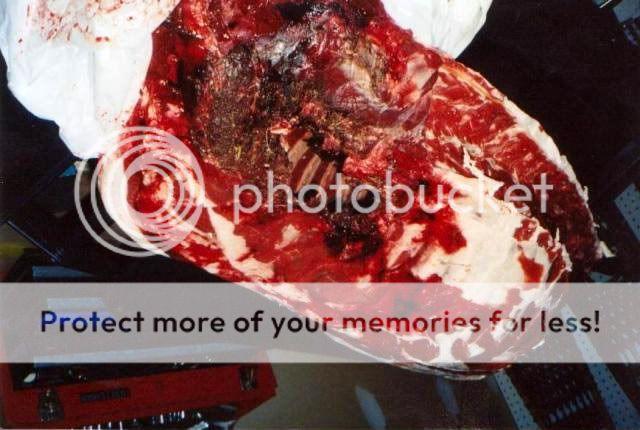In my opinion, if your using a big game bullet or any bullet using a relatively heavy jacket, RPM levels really will have no effect on penetration or expansion as long as they are not high enough to cause bullet failure in flight. If that happens, there will be no penetration or expansion in the intended target anyway!!!

I have tested this quite a bit, no scientic testing, just what we all can do. In my opinion, If the bullet will survive the launch velocity and RPM levels at the muzzle, down range effects will be nearly identical.
The only thing I have seen is that bullets seem to penetrate in a slightly straighter line when they are fired from a faster twist barrel. This is espeically true when dealing with long solids or bullets that when expanded still have a relatively long bullet length after expansion. Bullets that expand to the point that they are less then 50% of their original length, they seem to penetrate pretty darn straight.
There is one area of shooting and hunting where rpm levels can make a dramatic difference in expansion. Varmint hunting. Here we are taking bullets with very thin jackets and driving them as fast as we can. I have tested on several occasions with two 22-250 rifles, one in 1-14 twist, the other in 1-9. Shooting several different bullets. With conventional bullets that would handle the rpm levels in the faster twist barrel, those bullets produced noticably more "POP" on game such as gophers, prairie dogs, jack rabbits and rock chucks compared to the same bullet at same velocity in the 1-14 twist barrels.
I had to be careful to limit velocity to the same in both. Bullets such as the Speer TNT, Sierra Blitzking and Hornady V-Max had the occasional bust cloud if I pushed things to hard. The Ballistic Tips took anything I could throw at them in either barrel with ease.
I also found there was a more dramatic "pop" using tipped bullets in the fast twist barrels, again, driving them as fast as possible. With these situations, I believe these bullets are on the ragged edge before coming apart anyway, except perhaps the Ballistic Tip. When they impact, they literally come apart. Those that are tipped simply dust. Now some will say why are we seeing some exit wounds on larger varmints? Well, if you shoot a yote at 20 yards with 00 buckshot, you will likely see an exit wound.
Same idea here. Even though the bullet has fragmented violently, all the pieces are still in close proximity and still traveling at very high velocity. They shed velocity quickly and in game such as a coyote, most will not exit but on say a jack rabbit or rock chuck, most often even though the bullet has fraged darmatically, they still exit.
Again, in my opinion, for big game bullets, its hardly worth talking about at long range other then perhaps straight line penetration that may be improved with higher RPM levels.
Just my 2 cents.


